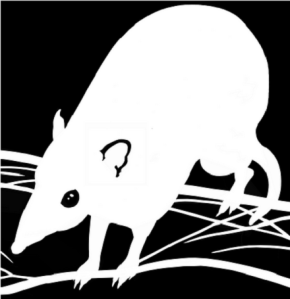By Bill Bateman. There has been a series of letters in West Australian newspapers recently that have prompted me to write this piece: the letters complain about an apparent rise in the number of ravens (Corvus coronoides) in suburbs and a concomitant decline in other bird species. The ravens are accused of nest robbing: “there is no doubt that ravens deserve much of the blame of the…”sound of silence” in our gardens”; “literally hundreds of [ravens] – have invaded our suburbs”; “I watch [the ravens] fly off, baby bird in each beak…”; “They carried out their thuggery throughout the nesting season”; “all we hear is the disgusting gagging noises of the local murder of crows”.
This is emotive stuff – is there any truth to it? Ravens, and other corvids, do very well in urban areas generally. There are some species that don’t of course – the Hawaiian crow, or ʻalalā (Corvus hawaiiensis), avoided urban sprawl and humans in general, and is now effectively extinct in the wild; while in Europe some species of crow, such as rooks (Corvus frugilegus) and jackdaws (Corvus monedula), are familiar urban or periurban birds in some countries but not in others. Like so many urban adapters, crows probably like urban areas as there is increased food and decreased predation, resulting in collapsed territories, increased social tolerance and the resulting appearance of large groups of individuals. In effect, we have subsidised these animals, through altering resource availability and subsequently increasing their population at a local scale.
Subsidised predators can have a profound effect on their local environment. Vanak & Gompper (2008) list subsidized predatory beetles influencing insect herbivore populations (Rand & Louda, 2006); subsidized mountain lions influencing bighorn sheep demographics (Rominger et al., 2004) and subsidized red foxes influencing gerbil ecology (Shapira, Sultan & Shanas 2008). There is also the example of subsidized ravens influencing tortoise ecology in the USA (Boarman, 2003): ravens (Corvus corax) have benefited from human resources in the Mojave Desert such that they have expanded their range and prey on juvenile desert tortoises to such an extent that tortoise populations have been negatively affected.
What can we do in Australia? Well, to start with we need to know more about our ravens. Webb et al. (2004) found that C. corax chick survival was improved in urban areas – perhaps this is true for our species as well? Are they relying on anthropogenic waste food? Are they actually raiding many nests of other species? It seems obvious that we also need to know more about the prey species in urban areas – are they common or declining? Are there enough nesting areas? Would planting more native trees increase breeding success? Are ravens merely the final straw for species that have lost habitat across urban areas and are already at a low ebb?
For now, let’s not blame the raven and let’s not reflexively resort to culling. Let us instead see if we can improve the lot for other species, reduce access to waste food for the raven and end their subsidisation.
References:
Boarman, W. I. (2003). Managing a subsidized predator population: reducing common raven predation on desert tortoises. Environmental management, 32(2), 205-217.
Gompper, M. E., & Vanak, A. T. (2008). Subsidized predators, landscapes of fear and disarticulated carnivore communities. Animal Conservation, 11(1), 13-14.
Rand, T.A. & Louda, S.M. (2006). Spillover of agriculturally subsidized predators as a potential threat to native insect herbivores in fragmented landscapes. Conserv. Bio. 20, 1720–1729.
Rominger, E.M., Whitlaw, H.A., Weybright, D.L., Dunn, W.C. & Ballard, W.B. (2004). The influence of mountain lion predation on bighorn sheep translocations. J. Wildl. Mgmt. 68, 993–999.
Shapira, I., Sultan, H. & Shanas, U. (2008). Agricultural farming alters predator–prey interactions in nearby natural habitats. Anim. Conserv. 11, 1–8
Webb, W. C., Boarman, W. I., & Rotenberry, J. T. (2004). Common Raven juvenile survival in a human-augmented landscape. The Condor, 106(3), 517-528.


![IMG_0971[1]](https://westernweb.net/wp-content/uploads/2015/11/img_09711.jpg?w=1000)